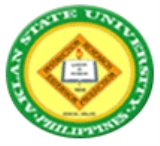
Australian Services Union
Encyclopedia
The Australian Municipal, Administrative, Clerical and Services Union, which operates under the trading name of the Australian Services Union or ASU, is a trade union
that represents members in a variety of industries.
This former incarnation of the ASU was the product of several earlier amalgamations including:
The amalgamation of these unions occurred as a result of an ACTU policy of encouraging union rationalisation.
, Energy and Utilities, Airlines and transport, Social and Community Services, Information Technology
, and Clerical and Administration Employees.
or wages areas and white collar
or salaried staff. In these states there are other small craft unions
. In South Australia and Queensland the ASU only covers Salaried staff, whereas blue collar employees are covered by state registered unions that are not affiliated with the ASU - principally the Australian Workers Union (AWU).
Trade union
A trade union, trades union or labor union is an organization of workers that have banded together to achieve common goals such as better working conditions. The trade union, through its leadership, bargains with the employer on behalf of union members and negotiates labour contracts with...
that represents members in a variety of industries.
Union history
The current incarnation of the ASU was formed in 1993 as a result of a three way amalgamation between the Federated Municipal and Shire Council Employees Union (MEU), the Federated Clerks' Union(FCU) and the Australian Municipal, Transport, Energy, Water, Ports, Community & Information Services Union (Which was also known as the ASU at the time).This former incarnation of the ASU was the product of several earlier amalgamations including:
- 1 July 1991: The Municipal Officers' Association (MOA), the Australian Transport Officers' Federation (ATOF) and the Technical Services Guild of Australia (TSG).
- July 1992: the Australian Social Welfare Union joined the ASU.
- October 1992: West Australian Railway Officers Association joined the ASU.
- November 1992: the Australian Shipping & Travel Officers Association(ASTOA) joined the ASU.
The amalgamation of these unions occurred as a result of an ACTU policy of encouraging union rationalisation.
Union Structure
While the ASU has a single national identity, the union continues to operate in a practical sense through a number of separate state branches. Several of these branches also operate in conjunction with unions that are registered under the industrial relations systems of various states. The main ASU industries are Local GovernmentLocal government
Local government refers collectively to administrative authorities over areas that are smaller than a state.The term is used to contrast with offices at nation-state level, which are referred to as the central government, national government, or federal government...
, Energy and Utilities, Airlines and transport, Social and Community Services, Information Technology
Information technology
Information technology is the acquisition, processing, storage and dissemination of vocal, pictorial, textual and numerical information by a microelectronics-based combination of computing and telecommunications...
, and Clerical and Administration Employees.
| Elected Representatives | ||
|---|---|---|
| Name | Position | Covening responsibilities |
| David Smith | National Secretary | |
| Linda White | Assistant National Secretary | Convenor of the National Airlines Division |
| Greg McLean | Assistant National Secretary | Convenor of the Utilities (Energy & Water) Division, the Local Government Division and the Transport Committee (Rail and Bus). |
Local Government Industry
The ASU is the Principal Union in the local government industry nationally. Under the ASU's federal rules, all local government employees are eligible to join the union. In a practical sense, there are differences in the local government occupations that are covered by each state branch. These differences arise out of the differing history of the predecessors of the ASU and whether there were other local government unions in existence at the time of ASU amalgamations. In NSW, Victoria, Western Australia and Tasmania the ASU or its affiliated state registered unions are the dominant local government unions and represent members in both blue collarBlue collar
Blue collar can refer to:*Blue-collar worker, a traditional designation of the working class*Blue-collar crime, the types of crimes typically associated with the working class*A census designation...
or wages areas and white collar
White-collar worker
The term white-collar worker refers to a person who performs professional, managerial, or administrative work, in contrast with a blue-collar worker, whose job requires manual labor...
or salaried staff. In these states there are other small craft unions
Craft unionism
Craft unionism refers to organizing a union in a manner that seeks to unify workers in a particular industry along the lines of the particular craft or trade that they work in by class or skill level...
. In South Australia and Queensland the ASU only covers Salaried staff, whereas blue collar employees are covered by state registered unions that are not affiliated with the ASU - principally the Australian Workers Union (AWU).

